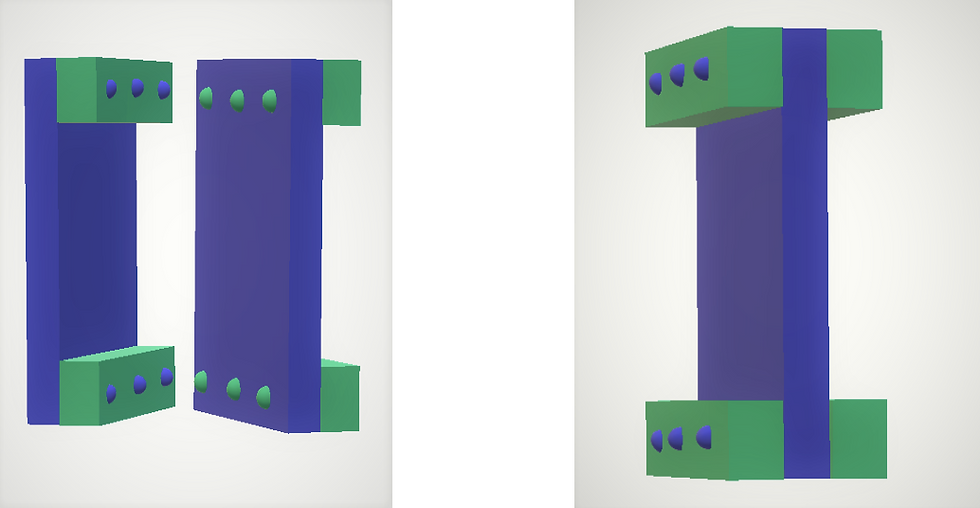Poly-lactic Acid in Tissue Engineering
- Frances
- Dec 25, 2017
- 3 min read
Updated: May 13, 2018
Since I did a partner review of poly-lactic acid (PLA) for a course at school and learned about the material, I figured I could make a few blog posts about it. One of my interests is the applications of materials science in medical innovation, and because of the unique properties of PLA, it is a promising material for many different applications in medicine.
Synthesis of PLA

Figure 1. Poly-lactic acid general synthesis & comparison vs. other plastics infographic (SelfEco).
Figure 1 gives a general overview of how PLA is synthesized from its raw sources to a polymer, as well as some factoids that compare PLA to other similar plastics.
PLA is made of biodegradable and renewable sources, like polysaccharides that are naturally found in plants like starch and cellulose, as well as naturally occurring proteins like gelatin, casein, and silk. The polymer has excellent biocompatibility, toxicity, mechanical and structural properties, which makes it a versatile material. PLA is currently used for many different applications—from biodegradable utensils and packaging to 3D printing filaments and orthopedic surgical screws. PLA also has promising applications in the medical fields, particularly in nanoparticle synthesis/drug delivery, and tissue engineering. This mini review focuses on an application of PLA in tissue engineering.
PLA in Tissue Engineering
PLA is biocompatible, has slow degradation rates and good mechanical properties, and can be synthesized in many different forms. These characteristics make PLA a great candidate for applications in tissue engineering, specifically tissue-engineering scaffolds, which are templates for tissue regeneration. Several properties of PLA that are not optimal for bio-interactive materials are its lack of bioactive sites/functional groups, and its hydrophobic tendencies. One way to solve this problem is to incorporate another material with PLA to compensate for these drawbacks. A promising material for this application is chitosan, which has been proposed for usage as a modification component to a PLA scaffold (1). Chitosan is a biopolymer that is abundantly found in nature, and has the bio-affinitive properties that PLA lacks, such as numerous bioactive sites, bioadhesion, and antibacterial and antifungal effects. Chitosan also can accelerate wound healing, and because it is osteocompatible, it can also accelerate bone formation (2).
Chitosan can be incorporated into PLA scaffolds through a process called electrospinning. The electrospinning process results in a phase separation of the two polymers, and this separation produces a unique surface structure of the scaffold. The particular surface structure that has proven to be most effective in a tissue scaffold is called an “island topography” structure, in which “islands” of chitosan are formed on the surface of a tissue scaffold with a PLA core.
The island topography surface structure is favorable for applications in tissue engineering because it provides an even spread of hydrophobic and hydrophilic sites on the surface of the scaffold, suitable roughness at the surface for cells to attach to, and cell recognition sites which are provided by the chitosan (1). To test the efficacy of the blended chitosan and PLA scaffolds, mineralization and cell growth can be tested. According to researchers from the Beijing University of Chemical Technology, the PLA-chitosan scaffolds with island topography performed the best, in that they accumulated the most mineralization (mimicking bone growth and formation) and cell growth (mimicking attraction of bone cells in an actual biological setting). These results show that blending chitosan into a PLA tissue scaffold improves the biocompatibility and cell affinity properties of PLA and improves it for applications in tissue engineering.
References
1. Xu, Ting; Yang, Hongyang; Yang, Dongzhi; and Yu, Zhong-Zhen
Polylactic Acid Nanofiber Scaffold Decorated with Chitosan Islandlike Topography for Bone Tissue Engineering
ACS Applied Materials & Interfaces 2017 9 (25), 21094-21104.
DOI: 10.1021/acsami.7b01176
2. Jafarkhani, Mahboubeh; Fazlali, Alireza; Moztarzadeh, Fathollah; Moztarzadeh, Zoha; and Mozafari; Masoud
Fabrication and Characterization of PLLA/Chitosan/Nano Calcium Phosphate Scaffolds by Freeze-Casting Technique
Industrial & Engineering Chemistry Research 2012 51 (27), 9241-9249.
DOI: 10.1021/ie300173j



Comments